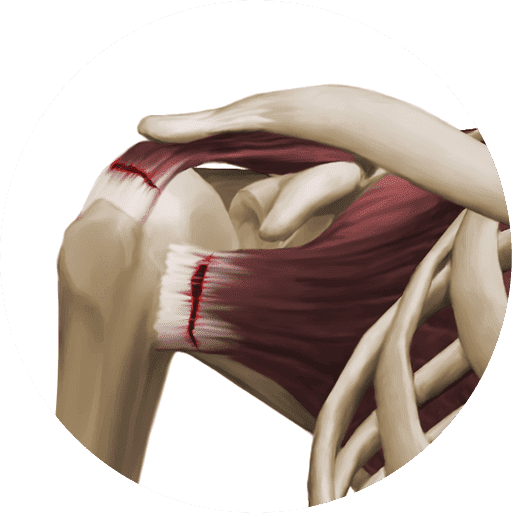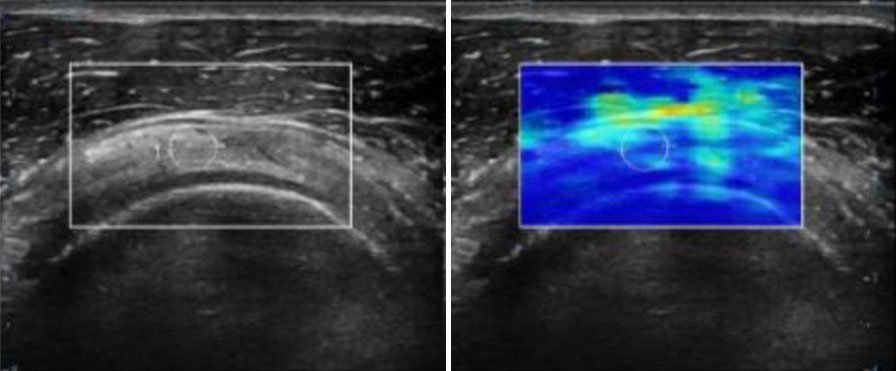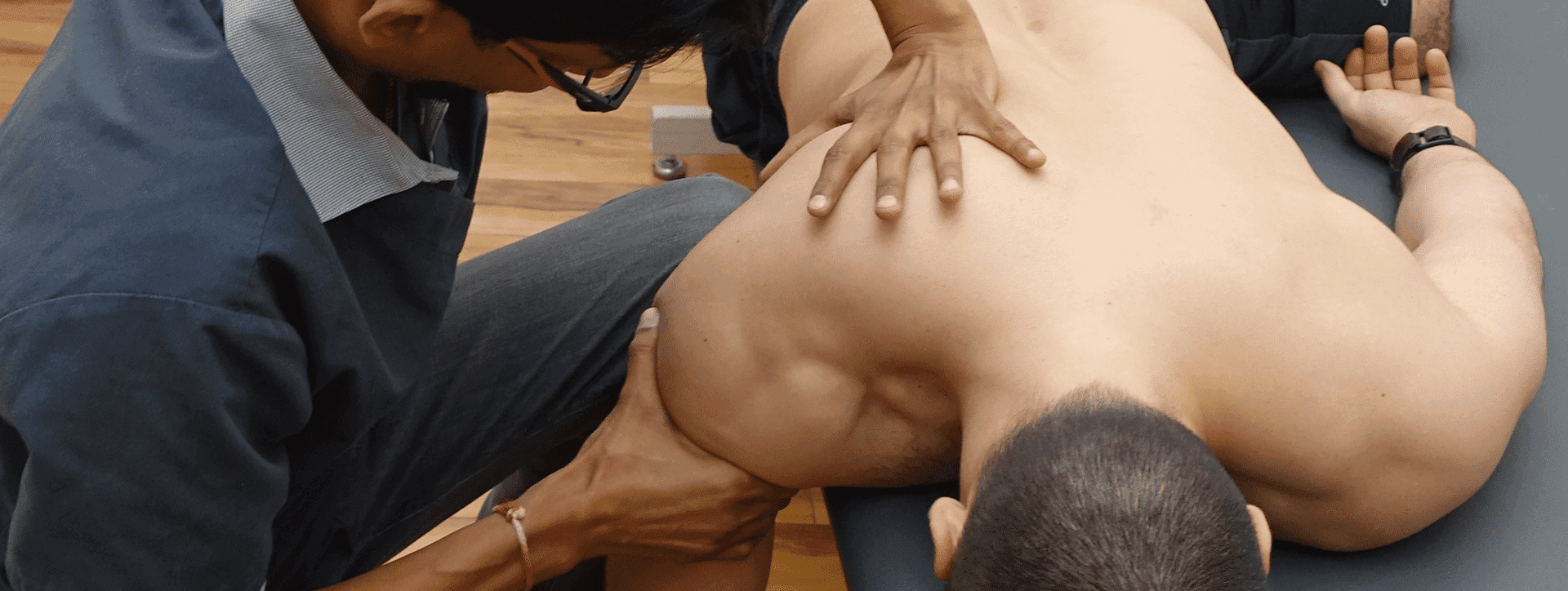Physical Therapy
Conventional treatment for rotator cuff tendinosis involves various rehabilitation exercises for strengthening the rotator cuff. Our preferred approach is Dynamic Neuromuscular Stabilization (DNS), which involves the precise positioning of the shoulder blade and humerus in specific developmental positions, with the goal of optimizing rotator cuff muscle and shoulder girdle function.
With DNS, pain arising from the position of the humeral head beneath the acromial arch disappears, and proper movement is restored. While traditional physical therapy focuses on strengthening the rotator cuff muscles, we first seek to restore motor control and muscular synergies, prior to muscle strengthening exercises.
Dynamic Neuromuscular Stabilization is a highly effective physical therapy exercise system, Originating from the famous Prague School of Physical Rehabilitation, this approach has revolutionized the treatment of shoulder pain and is considered the method of choice for conservative shoulder pain treatment.
Proteus Shoulder Physical Therapy
Proteus is a new innovation for the diagnosis and rehabilitation of shoulder disorders. Its uniqueness lies in its intelligent co-linear resistance. Special AI technology allows for coupled resistance to combined motion of the wrist, elbow, arm, shoulder blade and thorax. This resistance restores lost motion synergy between all joints and muscles that connect the shoulder to the rest of the body. Individual programs can be selected based on biomechanical motion analysis. Muscle strength and control is restored, based on objective quantitative assessment rather than conventional subjective assessment.
Ultrasound Guided Dry Needling
USGDN is the preferred approach for treating most shoulder problems that do not require surgery. USGDN is particularly good for shoulder pain, yielding results that surpass any other conservative treatments available.
- Ultrasound guided procedures at NYDNR use the most advanced ultrasonography equipment, enhanced with sonoelastography, rarely available in private clinics.
- High resolution ultrasonography is the method of choice for USGDN procedures, able to detect deep trigger points that cannot be manually palpated.
- USGDN is highly effective, requiring only 1-3 applications, versus blind dry needling that requires multiple repetitions.
- Blind dry needling cannot access deep trigger points, and lacks precision and specificity.
- We are able to combine USGDN with focused and radial shockwaves, for optimal results.
- USGDN can eliminate the symptomatic phase of physical therapy, moving the patient directly from symptoms to correction, and reducing care by 4-8 weeks.
- USGDN is an evidence-based treatment approach with a high degree of efficacy.
- Dr.Kalika is an internationally recognized expert in USGDN, with multiple scientific publications to his credit.








































